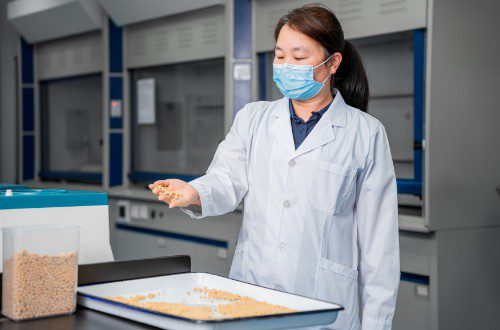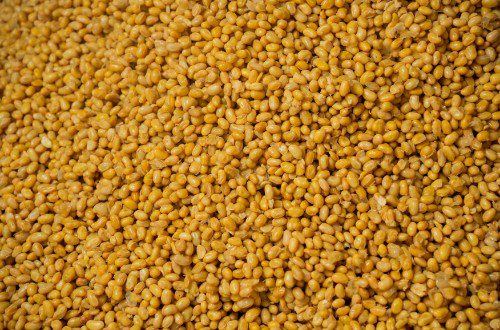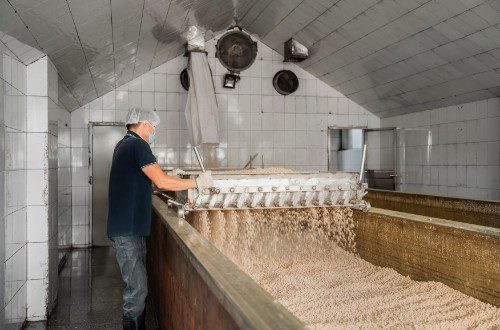Moringa powder is a powder made from the grinding of moringa seeds, with a variety of effects and functions, as follows:
Nutritional supplements
Supplementary proteins: Moringa powder is rich in protein components, which can supplement nutrients for the human body, but also promote the synthesis of immunoglobulin, alleviate the symptoms of limb weakness due to the lack of protein in the body, which is conducive to physical health.
Supplemental trace elements: Moringa powder contains a variety of trace elements, such as amino acids, calcium, vitamin E, potassium, etc., appropriate consumption can supplement the body's need for trace elements, to a certain extent, to prevent malnutrition.
Enhance the body
Moringa powder contains chorism and alkaloids, has a certain antiseptic effect, appropriate consumption can be to a certain extent to improve the body's physical condition, but chorism can not be a substitute for medicines! Treatment of diseases.
Improve digestion
Chipotle powder contains a large amount of dietary fiber, can promote gastrointestinal peristalsis, conducive to the digestion and absorption of food, with the aid of improving the role of constipation.
Assist in lowering blood sugar
Some of the bioactive ingredients contained in chili powder can affect the secretion and utilization of insulin through a variety of pathways, thus assisting in lowering blood sugar.
Other effects
Chipotle powder can provide the human body with a large amount of vitamin C, vitamin A, Vitamin E, has a strong antioxidant effect, helps the liver to remove free radicals, slow down the aging of liver cells, enhance the detoxification function of liver cells, but also has the role of detoxification of alcohol to protect the liver.
Although moringa powder has many of the above effects, but can not replace the medicine to treat the disease. If uncomfortable symptoms occur, you should seek medical advice and treatment under the guidance of a doctor. In addition, excessive consumption of moringa powder may irritate the gastrointestinal tract, causing bloating, abdominal pain and other discomforts, and consumption by pregnant women may also lead to uterine contractions, triggering miscarriages, and is therefore contraindicated in pregnant women.
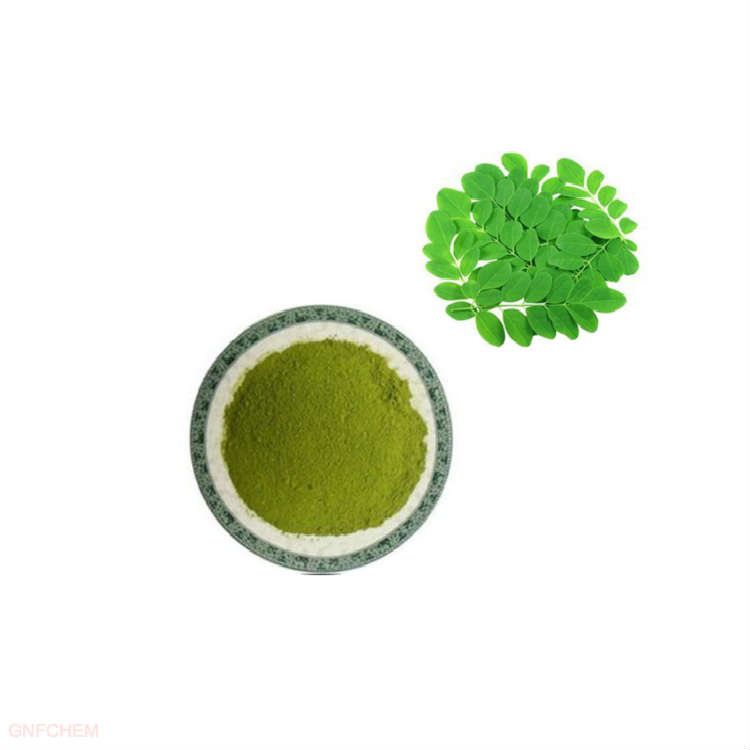
Comparison of Sweetness Values
Different sources state differently how sweeteners of mannitol compares to sucrose, but in general mannitol is less sweet than sucrose, though closer. Relevant information is as follows:
The sweetness of industrial grade mannitol is about 57% - 72% of sucrose3.
There is also information that the sweetness of mannitol is 50 - 70% of the sweetness of sucrose4.
There is also information that shows mannitol has a sweet taste, and that its sweetness is equivalent to 70% of that of sucrose6.
sweetness Significance of the comparison
In food applications, this sweetness comparison is of great significance. Because mannitol has the least water absorption among sugars and sugar alcohols and has a pleasant sweetness, it is often used as an anti-sticking agent in foods such as maltose, chewing gum, rice cakes, and as an anti-sticking powder in general confectionery, and as a low-calorie, low-sugar sweetener in foods for diabetic patients, bodybuilding foods, etc.36 It can provide a sweetness close to that of sucrose while meeting the needs of special populations for a low-calorie intake and playing a special physical role in the preparation of some food products. It plays a special physical role in the preparation of some foods.
Comparison of the sweetness of different sugar alcohols with sucrose
In addition to mannitol, other common sugar alcohols also differ in sweetness from sucrose. For example, the sweetness of erythritol is about 70% that of sucrose, maltitol is 90% that of sucrose, sorbitol is 60% that of sucrose, xylitol is as sweet as regular sucrose, isomaltrexol is 45-65% that of sucrose, and lactitol is 30-40% that of sucrose.4 These comparisons provide a clearer view of the position of the sweetness of mannitol in the context of many sugar alcohols.
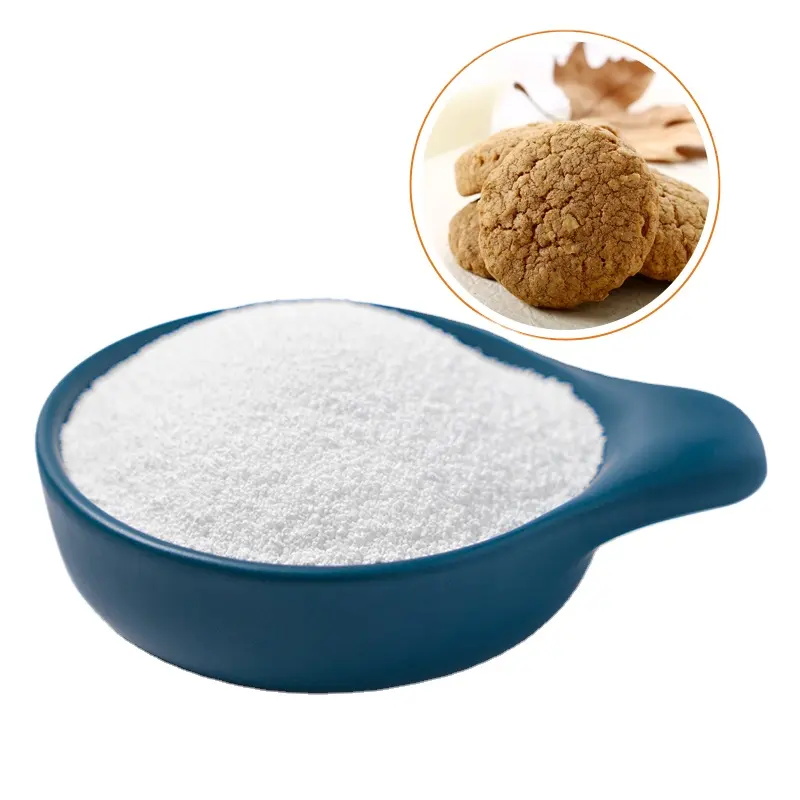
Hazards of Maltitol
Maltitol is a common artificial sweeteners commonly used in the preparation of candies, chewing gum, chocolates and other foods. When consumed in moderation, maltitol is generally harmless and has benefits such as being low in calories, preventing dental caries and laxative. However, excessive consumption or long-term intake of large quantities may bring about a series of health problems.
1. Digestive problems
Bloating and diarrhea: Maltitol is not easily and completely absorbed in the intestines, and excessive consumption may lead to gastrointestinal discomforts such as bloating, diarrhea, and bowel sounds. This is because the unabsorbed portion will be metabolized by bacteria in the large intestine, producing gas and water, thus causing gastrointestinal discomfort.
Gastrointestinal mucosal damage: Maltitol is cold in nature and is not easily dissolved by digestive enzymes, it will accumulate in the gastrointestinal tract after intake, and repeated stimulation of the gastrointestinal tract may damage the gastrointestinal mucosa, resulting in gastric and abdominal pain.
2. Blood sugar effects
Despite the low glycemic index of maltitol, its excessive intake may still have some impact on blood glucose control, especially in diabetic patients. Prolonged intake of maltitol in large quantities may be absorbed by the body and converted to glucose, resulting in elevated blood glucose, which is detrimental to disease control.
3. Metabolic burden
Excessive consumption of maltitol will increase the metabolic burden of the liver and kidney. As maltitol is not easy to be digested and absorbed, it may be converted into fat and accumulate in the body if consumed in large quantities over a long period of time, thus leading to obesity and weight gain.
4. Allergic reactions
A few people may be allergic to maltitol and develop symptoms such as rash, itching and difficulty in breathing.
5. Nutrient absorption disruption
Maltitol may interfere with the absorption of certain minerals and vitamins, affecting the body's intake of other important nutrients.
6. Oral health problems
Although maltitol does not generally cause tooth decay, if consumed in excess, it may react with bacteria in the mouth that produce acids that can damage teeth and increase the risk of gum disease and tooth decay.
7. Cardiovascular Health Risks
Excessive intake of maltitol is not conducive to the dissolution of carbohydrates and fats. It also affects metabolism and tends to deposit fats in capillaries, leading to elevated blood pressure, and may even increase the risk of blood vessel blockage.
Conclusion
Maltitol, as a low-calorie sweetener, is safe when used in moderation, but for special populations (e.g., diabetic patients, hypertensive patients, and those with weak gastrointestinal function), it is recommended that it be used with caution and ingested under medical supervision. To minimize potential health risks, excessive consumption of maltitol should be avoided while maintaining a balanced diet and healthy lifestyle.
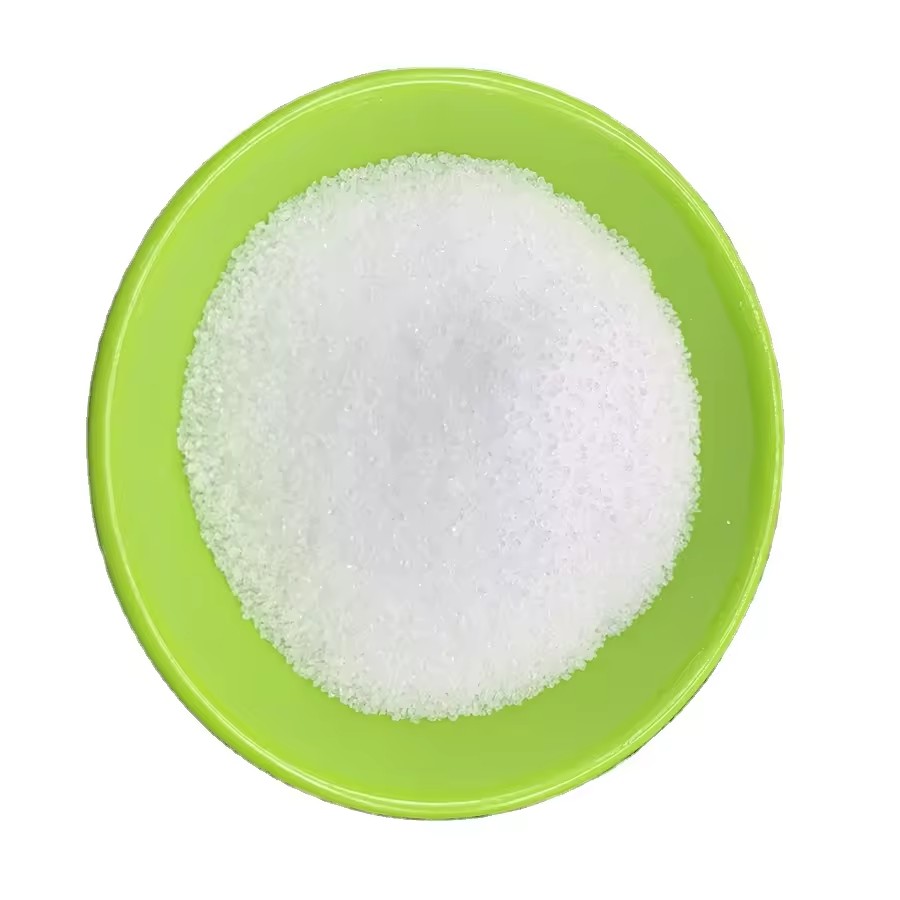
proteins are the basis of life and have a vital role in the human body. The following are the main effects and functions of proteins:
1. Composition of human tissues
Proteins are the basic substances that make up the cells, tissues and organs of the human body. For example, muscles, internal organs, blood, skin, bones, etc. all contain large amounts of proteins. These proteins play a role in structural support in the human body and are the basis for maintaining the form and function of the human body.
2. Maintaining the normal metabolism of the body
Proteins are involved in a variety of biochemical reactions in the body and are components of enzymes, hormones and other biologically active substances. These substances play an important role in regulating the body's metabolism and maintaining the stability of the internal environment.
3. Transportation function
Many substances in the body, such as oxygen, carbon dioxide, nutrients, etc., need to be transported through the carrier composed of proteins. For example, hemoglobin can transport oxygen to all tissues of the body, and apolipoprotein is responsible for transporting fat.
4. Immune function
Proteins also play an important role in the immune system. Antibodies are special proteins that recognize and bind to foreign pathogens, thus helping the body to fight off infections. In addition, proteins are involved in constituting immune cells, such as T cells and B cells, which play a key role in the immune response.
5. Provide energy
Although protein is not the body's main source of energy, under special circumstances, such as prolonged starvation or after strenuous exercise, protein can also be broken down to produce energy for the body to use.
6. Promotes growth and development
Protein is particularly important for the growth and development of children. It is an important component of bones, muscles and other tissues, and plays an important role in promoting children's height, weight growth and organ development.
7. Maintenance of acid-base balance and plasma osmotic pressure
Proteins in the blood, such as albumin, maintain the acid-base balance and osmotic pressure stability of the blood. This is important for maintaining the stability of the internal environment as well as the normal function of various tissues and organs.
To summarize, protein not only constitutes our body, but also plays an indispensable role in maintaining life activities. Therefore, reasonable protein intake is important for maintaining human health.
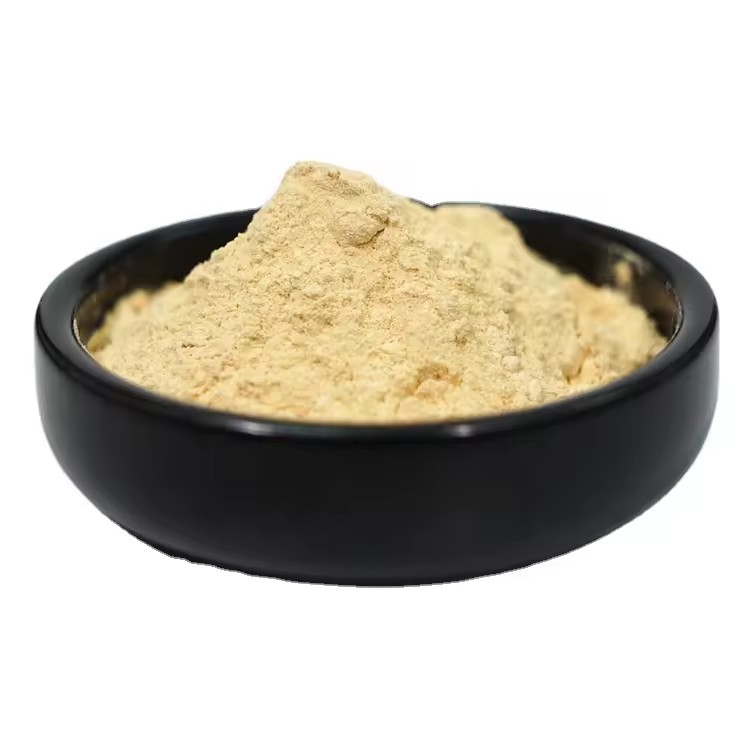
Global Status Analysis of Thickeners
Overall Market Development Situation
In recent years, with technological advances and environmental protection requirements, the market demand for thickeners has continued to grow. In particular, the market demand for high-efficiency thickeners, as a chemical additive widely used in a variety of industries such as coatings, cosmetics, and food, has shown a significant upward trend. In the future, the development of the thickener industry will focus more on technological innovation and sustainability.
Regional Differences and Characteristics
North American Market
The North American market continues to lead the development direction of the high-efficiency thickeners market due to its technological innovation capability and capital support, especially in the leading-edge research and development and the application of emerging technologies. The U.S. and Canada, represented by the U.S. and Canada, have advantages in R&D investment in high-efficiency thickeners and the transformation of technological achievements.
European Market
The European market is centered on green transformation, promoting industrial transformation through strict environmental regulations and consolidating its advantages in the sustainable development of high-efficiency thickeners. Countries such as Germany, the United Kingdom, France and Italy are outstanding in the improvement of environmental performance and sustainable development of high-efficiency thickeners.
Asia-Pacific
Asia-Pacific has become the fastest growing market in the world, with emerging economies such as China and India demonstrating strong demand growth and supply capacity. The Chinese market not only shows strong supporting capacity in the middle and low-end links of the industry chain, but also makes breakthroughs in high-end technology research and development and international cooperation. With the continuous promotion of the “Belt and Road” initiative, China is integrating into the global market with a more open attitude, and has become an important hub connecting the Asia-Pacific region with other regional markets.
Latin America and the Middle East and Africa
The high-efficiency thickeners market in Latin America (Mexico, Brazil and other countries) and the Middle East and Africa (Turkey, Saudi Arabia and other countries) is also developing, with a certain market demand and growth potential, but there is still a gap between North America, Europe and the Asia-Pacific region compared to the scale and technical level.
Product R&D Direction
Currently, the R&D focus of high-efficiency thickeners in the market has shifted to improving thickening efficiency, stability and environmental performance. For example, through the use of bio-based raw materials and nanotechnology, new high-efficiency thickeners can not only achieve excellent thickening effect, but also have good biodegradability and low environmental impact. In the future, with the application of new materials and technologies, high-efficiency thickeners will focus more on improving thickening efficiency and stability, for example, through the use of more advanced polymer design and surface modification technologies. In addition, with the increasing demand for functionality in downstream industries, efficient thickeners will also focus more on providing customized solutions to meet the needs of different applications.
Competitive Landscape of the Industry
In the global market, there are differences in production capacity, sales volume, sales revenue and sales price of High Efficiency Thickeners among different manufacturers. Competition in the China market is also relatively fierce, with major domestic manufacturers showing their own performance in terms of sales volume and sales revenue of High Efficiency Thickeners.
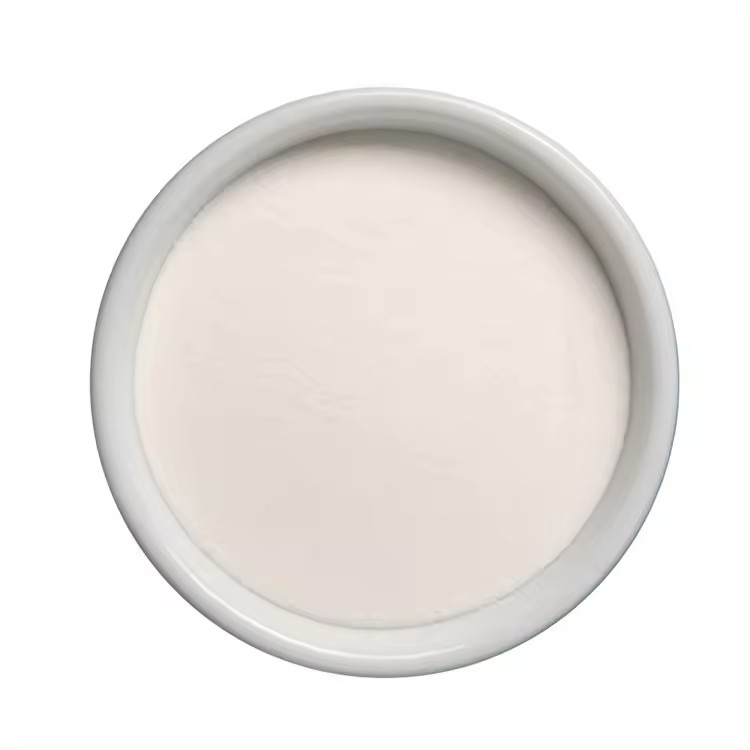
You might notice how rice vinegar, red vinegar, and sweetened vinegar each bring a punch of flavor to your cooking. These vinegars have become kitchen staples, especially as more people explore Asian-inspired dishes at home. Recent trends show that rice vinegar, including red rice vinegar, is gaining fans fast. Its mild, sweet, and sometimes complex taste fits right into everything from classic sushi to creative salads. Sweetened vinegars are also making waves, with specialty blends popping up in supermarkets and online stores. You can always find new ways to use these vinegars, whether you want to try Best Recipes or simply add a fresh twist to your meals.
Try displaying a vibrant image of all three vinegars with fresh herbs, vegetables, and sushi rice to inspire your next dish!
Key Takeaways
- Rice vinegar adds mild tang and sweetness to sushi rice, salads, pickles, and marinades, making dishes fresh and flavorful.
- Red vinegar brings bold, sweet-tart flavor to dumpling sauces, braised pork, noodle soups, and stir-fries, enhancing rich and savory meals.
- Sweetened vinegar creates tasty sweet and sour sauces, quick pickles, roasted meat glazes, and fruit salad dressings with a playful twist.
- Using the right vinegar brightens flavors and balances rich foods; simple substitutions let you keep cooking even if you run out.
- Vinegars not only improve taste but also offer health benefits like better blood flow and antioxidant support, making meals both delicious and smart.
Best Recipes: Rice Vinegar

Rice vinegar stands out as a must-have in your kitchen. You can use it in so many ways, and it always brings a gentle tang and a touch of sweetness to your food. Let’s dive into some of the Best Recipes where rice vinegar truly shines.
Sushi Rice
You can’t make authentic sushi without perfectly seasoned rice. Rice vinegar gives sushi rice its signature flavor. Start by cooking short-grain rice until it’s fluffy. While the rice is still warm, mix in a blend of rice vinegar, sugar, and salt. This mixture adds a mild acidity and a hint of sweetness that balances the rice. If you want to save time, try seasoned rice vinegar. It already contains sugar and salt, so you can just pour and mix. Sushi rice works as the base for sushi rolls, poke bowls, or even as a side dish for grilled fish.
Tip: Use a wooden paddle and a wide bowl to mix the rice gently. This keeps the grains from getting mushy.
Asian Salads
Rice vinegar makes Asian salads pop with flavor. Its mild acidity doesn’t overpower fresh greens or crunchy veggies. You can whisk it with a little sesame oil, soy sauce, and a pinch of sugar for a quick dressing. Toss it with shredded cabbage, carrots, and scallions for a refreshing slaw. Many home cooks love using rice vinegar in salads because it’s light and lets the natural flavors shine.
- A Harvard study found that people who used oil-and-vinegar dressings daily had a much lower risk of fatal heart attacks.
- Researchers believe vinegar, not just the oil, plays a big role in this benefit.
- Rice vinegar helps your arteries work better by improving blood flow.
- Even a tablespoon of rice vinegar can make a difference.
- Black rice vinegar, which is rich in anthocyanins, may offer even more heart-healthy perks.
So, when you reach for rice vinegar in your next salad, you’re not just adding flavor—you’re making a smart choice for your health.
Pickled Vegetables
Quick pickles are one of the best recipes for rice vinegar. You can pickle almost any vegetable—cucumbers, radishes, carrots, or daikon. Slice your veggies, then soak them in a mix of rice vinegar, water, sugar, and salt. Let them sit for at least an hour. The result? Crisp, tangy pickles that brighten up any meal.
- Culinary experts love rice vinegar for pickling because it’s mild and slightly sweet.
- A 2015 study showed that pickled veggies keep their antioxidants for up to 60 days.
- Vinegar, including rice vinegar, helps preserve food and adds a unique flavor.
- Studies show vinegar can help manage blood sugar and support heart health.
- These findings explain why rice vinegar is a top pick for quick pickles in Asian cuisine.
You can use these pickles in rice bowls, sandwiches, or as a crunchy snack.
Marinades
Rice vinegar works wonders in marinades. Its gentle acidity helps tenderize meat, chicken, or tofu without making them tough. Mix rice vinegar with soy sauce, ginger, garlic, and a touch of honey for a simple marinade. Let your protein soak for at least 30 minutes. The result is juicy, flavorful food that cooks up beautifully on the grill or in a pan.
You can also use seasoned rice vinegar for a quick flavor boost. It’s perfect when you want to whip up a marinade in minutes. Try it with shrimp, pork, or even roasted vegetables.
Suggestion: Show an image of sushi rice, a vibrant Asian salad, and a jar of colorful pickled vegetables to inspire your next meal.
You’ll find that these Best Recipes highlight the versatility of rice vinegar. Whether you’re making sushi, tossing a salad, pickling veggies, or marinating meat, rice vinegar brings out the best in every dish.
Best Recipes: Red Vinegar
Red vinegar brings a bold, complex flavor to your kitchen. You might know it from Chinese cuisine, but you can use it in many dishes. Its sweet, tart, and salty notes make it a star in both classic and modern recipes. Let’s explore some of the Best Recipes where red vinegar truly shines.
Dumpling Sauce
You can’t enjoy dumplings without a good dipping sauce. Red vinegar gives your sauce a deep, tangy kick that balances salty soy sauce and spicy chili oil. Just mix red vinegar with soy sauce, a splash of sesame oil, and a pinch of sugar. Add minced garlic or chopped scallions for extra flavor. This sauce works with pork, chicken, or veggie dumplings. You’ll notice how the vinegar cuts through the richness and brings out the filling’s taste.
Tip: Try adding a few drops of chili oil if you like heat. Red vinegar’s mellow acidity keeps the sauce from tasting too sharp.
Braised Pork
Red vinegar transforms braised pork into a melt-in-your-mouth dish. You start by browning pork belly or shoulder in a pot. Pour in red vinegar, soy sauce, sugar, and ginger. Let the pork simmer until it turns tender and the sauce thickens. The vinegar helps break down the meat and adds a subtle tang that balances the fat. You get a glossy, flavorful sauce that clings to every bite.
Many home cooks love this dish because it feels comforting and special. Red vinegar’s unique taste sets it apart from other braised meats. Serve it with steamed rice or noodles for a complete meal.
Noodle Soups
Red vinegar brings noodle soups to life. You can add a splash to hot and sour soup, beef noodle soup, or even wonton soup. The vinegar brightens the broth and adds depth without overpowering the other flavors. Just pour a little into your bowl before eating, or offer it on the side for everyone to adjust to their taste.
Some noodle shops in China keep a bottle of red vinegar on every table. You can do the same at home. Try it with hand-pulled noodles, rice noodles, or even ramen. The sweet and tart notes make every slurp more exciting.
Stir-Fries
You can use red vinegar to finish a stir-fry. Toss your cooked meat and vegetables with a splash of vinegar right before serving. The heat releases the vinegar’s aroma and coats everything in a glossy, tangy glaze. Red vinegar pairs well with beef, chicken, or tofu. It also works with crunchy veggies like bell peppers, snap peas, and carrots.
If you want to try new Best Recipes, experiment with red vinegar in your favorite stir-fry. You’ll notice how it lifts the flavors and adds a restaurant-quality touch.
Suggestion: Show an image of juicy dumplings, glossy braised pork, and a steaming bowl of noodle soup to inspire your next meal.
Red vinegar deserves a spot in your pantry. You can use it in sauces, braises, soups, and stir-fries. Its sweet, tart, and salty profile makes it a key ingredient in many Best Recipes from Chinese cuisine and beyond.
Sweetened Vinegar Dishes

Sweetened vinegar brings a playful twist to your kitchen. You can use it to create bold sauces, quick pickles, shiny glazes, and even dressings for fruit. Let’s look at some tasty ways to use sweetened vinegar in your cooking.
Sweet and Sour Sauce
You probably know sweet and sour sauce from your favorite takeout. You can make it at home with sweetened vinegar, ketchup, sugar, and a splash of soy sauce. This sauce tastes great with chicken, pork, or tofu. It gives your dish a tangy kick and a glossy finish. You can also use it as a dip for spring rolls or fried shrimp.
Tip: Add pineapple chunks or bell peppers for extra color and flavor.
Quick Pickles
Quick pickles are easy and fun. Slice cucumbers, carrots, or radishes. Pour sweetened vinegar over them. Let them chill in the fridge for an hour. You get crunchy, tangy snacks that brighten any meal. The global pickles market reached $14.21 billion in 2024 and keeps growing. People love pickles for their bold flavors and health benefits. In the U.S., the pickles market hit $3.1 billion this year. Many food lovers now look for sweet and spicy varieties, making quick pickles with sweetened vinegar a top choice.
Roasted Meat Glaze
You can brush sweetened vinegar on roasted meats for a shiny, flavorful glaze. Try it on pork, chicken, or duck. The sugar in the vinegar caramelizes in the oven. Your roast comes out with a beautiful color and a sweet-tart taste. In Chinese cooking, pig’s trotters in ginger and sweetened vinegar is a classic dish. The vinegar softens the meat and adds a rich, comforting flavor.
- Brush glaze on meat during the last 15 minutes of roasting.
- Let the meat rest before slicing for juicy results.
Fruit Salad Dressing
Sweetened vinegar makes fruit salads pop. Whisk it with a little honey and fresh mint. Drizzle over berries, melon, or citrus. The vinegar balances the sweetness of the fruit and adds a gentle tang. Your fruit salad will taste fresh and exciting.
Suggestion: Show an image of sweet and sour chicken, a glossy glazed roast, and a colorful fruit salad to inspire your next meal.
Tips and Substitutions
Flavor Pairing
Choosing the right vinegar can make your food taste brighter and more balanced. You might wonder which vinegar goes best with certain dishes. Here are some quick pairing ideas to help you out:
- Rice vinegar works well with sushi, salads, and light marinades. Its gentle tang lifts the flavors of fresh vegetables and seafood.
- Red vinegar shines in rich dishes like braised pork, dumpling sauces, and noodle soups. The sweet and tart notes cut through fatty meats and add depth.
- Sweetened vinegar pairs perfectly with sweet and sour sauces, glazes for roasted meats, and fruit salads. It brings a playful twist to both savory and sweet recipes.
Acidity from vinegars helps balance out rich or fatty foods. For example, a vinaigrette on a buttery avocado salad brightens every bite. Chefs also love pairing roast lamb with mint and sherry vinegar to create a more rounded taste.
You can experiment with these pairings to find what you like best. Vinegar’s acidity often prevents dishes from feeling too heavy and keeps flavors lively.
Substitution Guide
Sometimes you run out of a specific vinegar. Don’t worry—you have options! Many culinary experts recommend simple swaps that keep your dish tasting great. Here’s a handy chart for quick substitutions:
| If You Don’t Have... | Try This Instead | Ratio | Notes |
|---|---|---|---|
| Rice Vinegar | Apple Cider Vinegar | 1:1 | Add a pinch of sugar for sweetness |
| Red Vinegar | Balsamic or Sherry Vinegar | 1:1 | Use for braises and sauces |
|
Sweetened Vinegar |
Rice Vinegar + Sugar | 1 tbsp + ½ tsp sugar | Mix before adding to your recipe |
- Kombucha vinegar makes a great substitute for apple cider vinegar, especially if you want extra probiotics for gut health.
- Umeboshi vinegar offers a salty, tangy kick and brings minerals that help with nutrient absorption.
- Experts suggest starting with a 50/50 mix when trying a new substitute, then adjusting as your taste buds adapt.
You might want to display an image of vinegar bottles next to foods they pair with, or a simple substitution chart for easy reference.
With these tips, you can confidently swap vinegars and still enjoy delicious, balanced meals every time.
You’ve seen how rice, red, and sweetened vinegars can transform your cooking. These vinegars add flavor, color, and even health benefits to your favorite dishes.
- Rice vinegar works in marinades, dressings, and pickles.
- Red vinegar brings a sweet-tart kick and vibrant color to Asian recipes.
- Sweetened vinegar makes sauces, glazes, and fruit salads shine.
Try these recipes at home and experiment with your own ideas. Share your favorite vinegar tips or recipes in the comments!
Imagine a plate of glossy sweet and sour chicken or a bowl of sushi rice—your next meal could look just as inviting.
FAQ
Can I use rice vinegar instead of white vinegar?
Yes, you can swap rice vinegar for white vinegar in most recipes. Rice vinegar tastes milder and sweeter. If you want a closer match, add a pinch of sugar to balance the flavor.
What’s the difference between red vinegar and black vinegar?
Red vinegar tastes sweet, tart, and a bit salty. Black vinegar has a deeper, smoky flavor. You’ll find red vinegar in dumpling sauces and noodle soups. Black vinegar works best in braised dishes and dipping sauces.
How do I store these vinegars?
Keep your vinegars in a cool, dark place. You don’t need to refrigerate them. Make sure the cap stays tight. This way, your vinegar keeps its flavor for months.
Can I make sweetened vinegar at home?
Absolutely! Just mix rice vinegar with sugar. Try this simple ratio:
| Rice Vinegar | Sugar |
|---|---|
| 1 cup | 3–4 tbsp |
Stir until the sugar dissolves. Now you have sweetened vinegar for sauces and dressings.
Are these vinegars gluten-free?
Most rice and sweetened vinegars are gluten-free. Some red vinegars may contain wheat. Always check the label if you have gluten concerns.
Soy sauce is a staple in kitchens around the world, and over time, it has evolved into various forms to suit different dietary needs, cooking styles, and regional preferences. From halal and organic versions to low-sodium and light varieties, the differences go far beyond just the label. One of the most frequently asked questions among home cooks and food lovers is how the flavor varies between these types—especially when trying to choose the right soy sauce for a specific dish.
To answer this question, we’ll take a closer look at the flavor profiles of halal soy sauce, regular soy sauce, light soy sauce, organic soy sauce, and low salt soy sauce, with a focus on how ingredients, fermentation time, and sodium levels impact taste.
The Foundation: Regular Soy Sauce
Before diving into the variations, it’s helpful to understand what defines regular soy sauce. Traditional soy sauce is typically made from a mix of soybeans, wheat, water, and salt, and is aged through fermentation for several months. The result is a dark, rich liquid with a balanced blend of saltiness, umami, and a slightly sweet undertone from the wheat.
A blind taste test conducted by the Culinary Institute of America in 2022 found that regular soy sauce tends to have the highest perceived depth of flavor compared to lighter or reduced-salt versions. Testers described it as having a bold, roasted profile with notes of mushroom and molasses.
This makes regular soy sauce ideal for marinades, braised dishes, and sauces that need strong, lingering umami. However, its relatively high salt content—around 900–1000mg of sodium per tablespoon—can be a drawback for people monitoring their sodium intake.
Light Soy Sauce: Thinner, Saltier, and Brighter
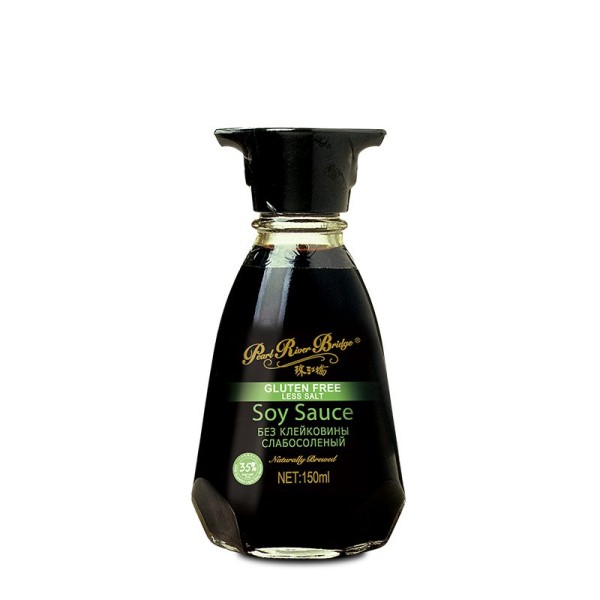
Despite the name, light soy sauce doesn’t necessarily mean low in sodium. In fact, it often contains more salt than regular soy sauce per volume. The “light” refers to color and body—it’s a thinner, more transparent liquid with a lighter brown tone and shorter fermentation period.
Taste-wise, light soy sauce delivers a sharper, salt-forward flavor with less depth and sweetness. It’s typically used in Cantonese cuisine to season stir-fries, steamed dishes, and dipping sauces where preserving the natural color of the ingredients is important. According to a consumer flavor preference survey by FoodNavigator Asia (2023), 61% of home cooks preferred light soy sauce in quick-cooking applications due to its cleaner taste and brighter finish.
Compared to regular soy sauce, light soy sauce doesn’t linger on the palate as long but brings a crisp, savory edge that enhances fresh vegetables, seafood, and tofu.
Halal Soy Sauce: Certified Purity, Familiar Taste
Halal soy sauce isn’t a flavor category in itself, but rather a version of soy sauce made in compliance with Islamic dietary laws. This means it must be free from alcohol and any ingredients derived from non-halal animal sources. Since many traditional soy sauces are fermented with the help of yeast or other agents that may produce trace alcohol, halal soy sauce requires special production methods—such as chemical hydrolysis or controlled microbial fermentation.
In terms of flavor, halal soy sauce is very close to regular soy sauce when naturally brewed. However, chemically hydrolyzed versions may taste slightly less complex, with a sharper saltiness and less fermented aroma. Brands that specialize in natural fermentation while staying halal-certified often use alternative fermentation strains or longer brewing times to match the depth of traditional soy sauce.
Many halal-certified products on the market, including halal light soy sauce, offer versatility without compromising on religious standards or flavor expectations. For families observing halal diets, this ensures they can enjoy authentic Asian flavors across various cuisines.
Organic Soy Sauce: Cleaner Taste with Earthy Notes
Organic soy sauce is made from organically grown soybeans and wheat, without the use of synthetic pesticides, additives, or genetically modified ingredients. While the core ingredients and brewing process are similar to that of regular soy sauce, the organic sourcing tends to result in subtle flavor differences.
Taste panels organized by Organic Food Magazine in 2023 noted that organic soy sauce often has a slightly milder saltiness and more pronounced earthy or nutty undertones. The umami is still present but is more delicate, making organic soy sauce a popular choice in dressings, sushi, and light broths.
Because of stricter ingredient sourcing and minimal processing, some organic soy sauces may also carry a hint of raw bean flavor, which some users describe as "cleaner" or "purer." When combined with other high-quality organic ingredients, the difference becomes more noticeable.
Low Salt Soy Sauce: Softer Flavor, Smart Choice
For health-conscious consumers, low salt soy sauce offers a way to enjoy the depth of soy flavor without overloading on sodium. Typically, low salt varieties reduce sodium content by 40% to 50% compared to regular versions, often landing at around 500mg per tablespoon.
Flavor-wise, low salt soy sauce is milder and rounder. It doesn’t pack the same punch as regular or light soy sauce but still carries enough umami to be functional in most dishes. Chefs often recommend using low salt soy sauce in recipes that already include other salty ingredients like broth or miso.
It’s also a go-to for individuals on sodium-restricted diets, as well as in children’s meals or elder-friendly cooking. Some brands boost the umami profile with natural mushroom or seaweed extracts to compensate for the reduced salt.
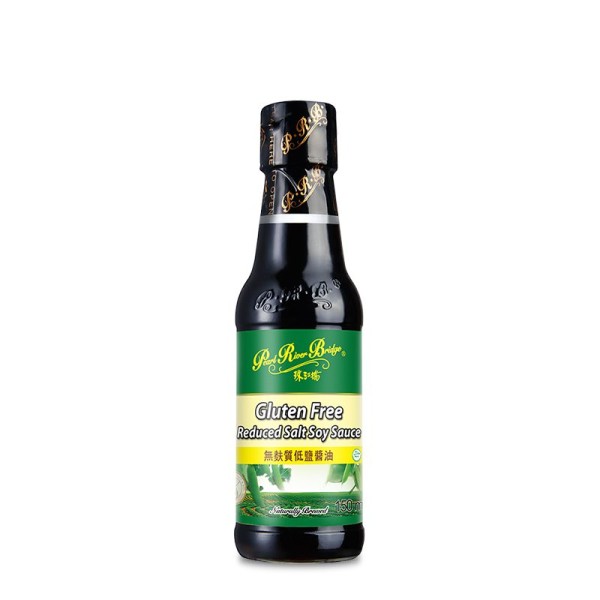

Choosing Based on Cooking Context
Understanding the flavor difference between halal soy sauce, light soy sauce, regular soy sauce, organic soy sauce, and low salt soy sauce ultimately comes down to what you’re cooking and who you’re cooking for. A stir-fry may benefit from the sharpness of light soy sauce, while a rich beef stew needs the depth of a regular version. Organic sauces shine in clean recipes with fresh produce, while low salt and halal varieties make soy sauce accessible to a wider audience without compromising dietary or health needs.
Soy sauce may be a humble ingredient, but its variety offers far more than just saltiness—it brings culture, craft, and complexity to every dish it touches.
When it comes to summer BBQs, most people reach for the usual suspects—ketchup, mustard, and barbecue sauce. But if you’re looking to add a bold, savory twist to your grilled dishes, there’s one secret weapon you shouldn't overlook: soy sauce. From marinades to glazes, soy sauce delivers a depth of flavor that enhances everything from steaks and burgers to grilled vegetables and tofu.
Not all soy sauces are created equal. Light soy sauce is perfect for quick marinades and dipping sauces, offering a salty umami punch without overpowering the natural taste of the food. On the other hand, dark soy sauce brings a thicker consistency and a slightly sweeter, more complex flavor—ideal for creating rich glazes or adding color to grilled meats like ribs and skewers.
For health-conscious grillers, options like low sodium soy sauce and gluten free low salt soy sauce make it easier to enjoy bold flavors without the guilt. These alternatives are especially great for those watching their sodium intake or following specific dietary needs, without compromising on taste.
Whether you’re grilling meat, seafood, or plant-based options, soy sauce can be used as a marinade base, a basting liquid, or a finishing drizzle. Try combining light soy sauce with garlic, sesame oil, and a touch of honey for an easy all-purpose BBQ marinade, or use dark soy sauce blended with chili paste and brown sugar for a sticky glaze that caramelizes beautifully on the grill.

When selecting soy sauce for your summer cookout, quality matters. Pearl River Bridge soy sauces are trusted by chefs around the world for their authentic flavor, traditional fermentation process, and variety of formulations to suit every need—from classic light and dark soy sauces to low sodium and gluten-free options. Their balanced taste and consistency make them the perfect addition to any BBQ recipe, elevating your outdoor cooking with ease and confidence.
In the world of culinary flavoring, soy sauce remains a staple across global cuisines. However, chefs and food manufacturers are increasingly turning to Concentrated Soy Sauce as a superior alternative to standard varieties. But what makes it so appealing for both home kitchens and large-scale operations?
Richer Flavor with Less Quantity
One of the key advantages of Concentrated Soy Sauce is its powerful umami flavor. Because it's more condensed, a smaller amount delivers deeper color, aroma, and taste. This makes it ideal for marinades, stir-fries, dipping sauces, and soups, allowing for better control over salt levels and consistency in recipes.
Cost-Efficient for Commercial Use
For restaurants and food production facilities, using Concentrated Soy Sauce for Commercial Kitchens translates into lower usage per dish without sacrificing flavor. This efficiency not only helps control ingredient costs but also reduces storage and transportation needs. It’s a practical solution that supports high-volume cooking while maintaining quality.
Enhanced Shelf Life and Stability
Thanks to its lower water content, Superior concentrated soy sauce typically offers a longer shelf life compared to regular soy sauce. It also maintains flavor stability better under varying storage conditions, which is particularly important for large-scale kitchens, catering services, and food manufacturers.
|
Rigorous Fermentation Process behind PRB's Soy Sauce
Our soy sauce is brewed following a centuries-old natural fermentation process. Uniquely steeped in the authentic Cantonese flavor tradition, PRB’s Soy Sauce offers a superior depth of flavor. |
Every Soybean Counts |
Steaming |
Propagating |
|
Fermentation and Aging of Moromi |
Pressing and Refining |
Bottling |
The Smarter Choice for Modern Kitchens
Whether you're developing a new food product or refining a signature dish, Concentrated Soy Sauce offers superior performance, taste, and versatility. Its ability to enrich dishes with deep umami flavor, while improving cost and storage efficiency, makes it a smart choice for both professionals and passionate home cooks.
As a reliable a Flavorful Chinese Sauces and Condiments supplier, we provide Superior concentrated soy sauce that meets strict food safety standards and delivers consistent quality. Our products are ideal for a variety of applications, from household cooking to Concentrated Soy Sauce for Commercial Kitchens. Backed by excellent customer support and fast global delivery, we help culinary professionals bring authentic flavor to every plate.
Smokeless Korean BBQ Grills: What Every Restaurant Owner Should Know
Smokeless Korean BBQ grills improve air quality and dining experience. A must-read guide for restaurant owners worldwide looking for clean and modern BBQ setups.
Running a Korean BBQ restaurant comes with one big challenge—smoke control. Customers love the flavor and experience of grilling meat at the table, but no one wants to leave a restaurant smelling like smoke. That’s why smokeless Korean BBQ grills are now the go-to solution for restaurant owners around the world.
In this blog, we’ll explain what makes these grills special, how they work, and what you need to know before buying.
What Is a Smokeless Korean BBQ Grill?
A smokeless Korean BBQ grill is specially designed to reduce smoke during grilling. It combines efficient heat sources with a built-in ventilation system to suck away smoke and grease right at the source—before it fills the air.
There are two common types:
- Upper Exhaust System (Korean BBQ Pipe): A stainless steel pipe above each table pulls smoke up and away. It's powerful and a classic design for many Korean BBQ restaurants.
- Under-Table Smoke Purifier: This system is installed below the tabletop and uses suction to collect smoke and oil under the grill. The biggest advantage? It’s hidden—your restaurant looks cleaner and more modern.
You can see how the following setup works.Find more information about our smokeless equipment here
Photo of the installed BBQ pipe

Photo of the installed smoke purifier


Why Go Smokeless?
- Better Customer Experience
- No one likes smoke in their face while eating. A smokeless setup keeps the air clear and comfortable.
- No Smell on Clothes
- Customers can enjoy the BBQ without worrying about smelling like it afterward—great for lunch crowds and families.
- Modern & Clean Look
- Especially with under-table purifiers, your restaurant stays sleek and uncluttered.
- Fire Safety & Grease Control
- These systems help manage grease and reduce fire risks, especially important for busy restaurants.
What to Consider Before Buying
Choose the Right Ventilation StyleDo you want a visible upper pipe, or a hidden system under the table? Both have pros and cons. Consider your restaurant’s style and layout.
- Grill Type Compatibility
- Smokeless systems can work with charcoal, gas, or induction grills. Make sure your setup matches your kitchen’s power source and safety regulations.
- Certifications Matter
- Look for products with international safety certifications like CE, UL, or ETL—especially if you’re buying from overseas.
- Easy Cleaning
- Make sure filters and grease trays are easy to access and clean. This saves time and keeps your restaurant safe.
We Deliver Smokeless Korean BBQ Grills Worldwide
With over 20 years of experience, we help restaurant owners across Asia, Europe, the Middle East, and the Americas create unforgettable BBQ experiences. Whether you're opening a new location or upgrading your current setup, we offer:- High-quality grills and ventilation systems
- Door-to-door delivery
- Custom sizes and configurations
- International certifications and support
- Buddha Jump Over the Wall1
- Canned Abalone2
- Canned Turtle Soup1
- Edible Bird's Nest2
- Frozen Foods1
- Frozen Seafood8
- Jelly/Pudding Applications1
- Meat Product Applications2
- Others Applications5
- Plant-based meat Product Applications1
- SURIMI2
- Soft Candy1
- Soft Candy Applications4
- bottle1
- can end2
- packaging film2
- tableware3
